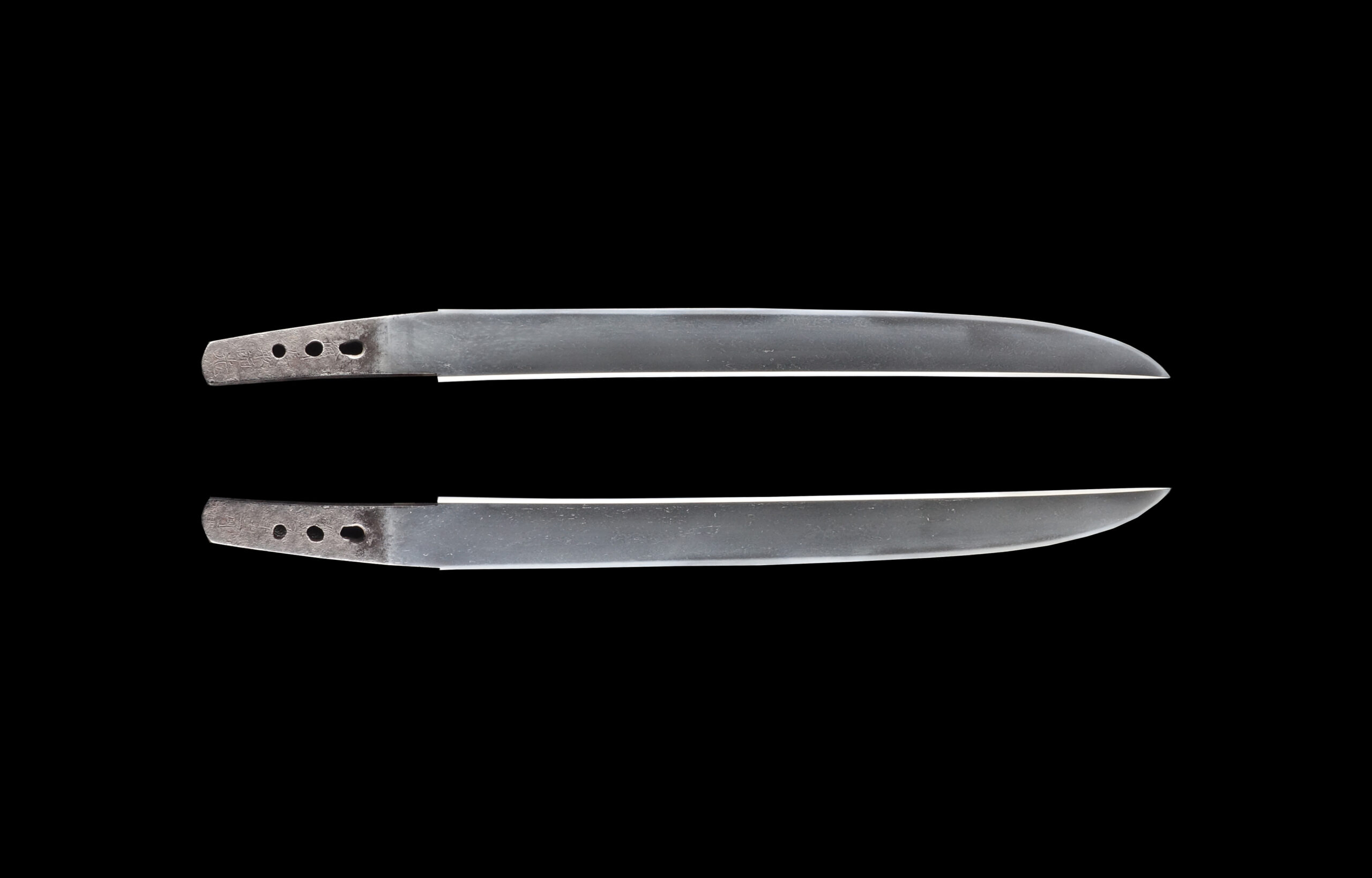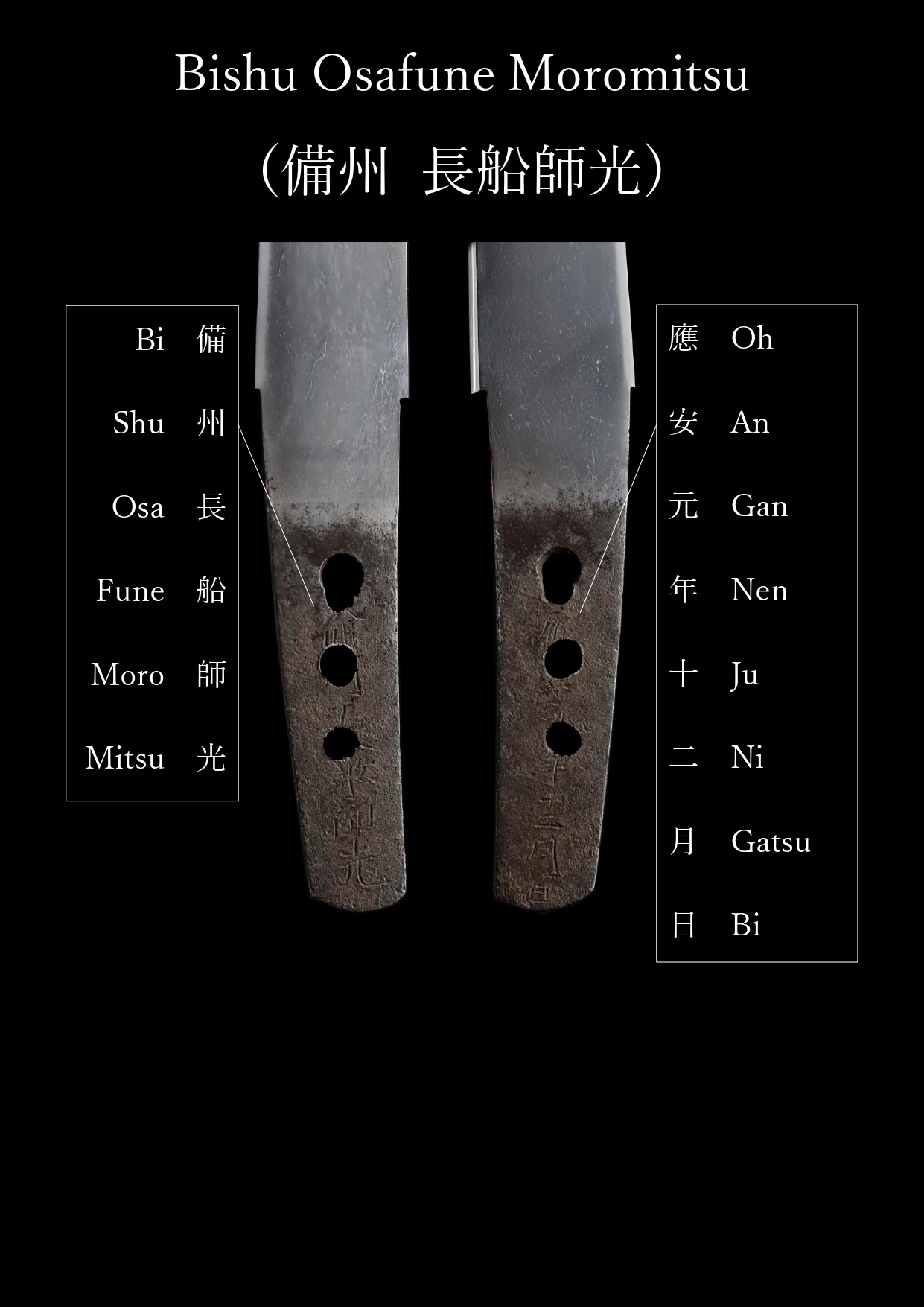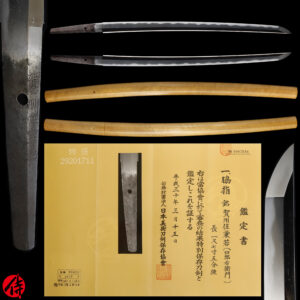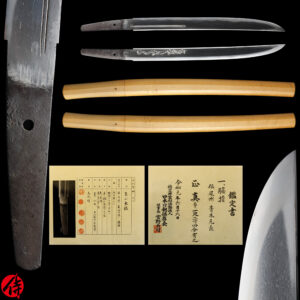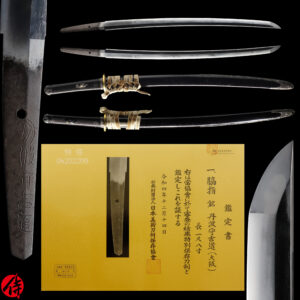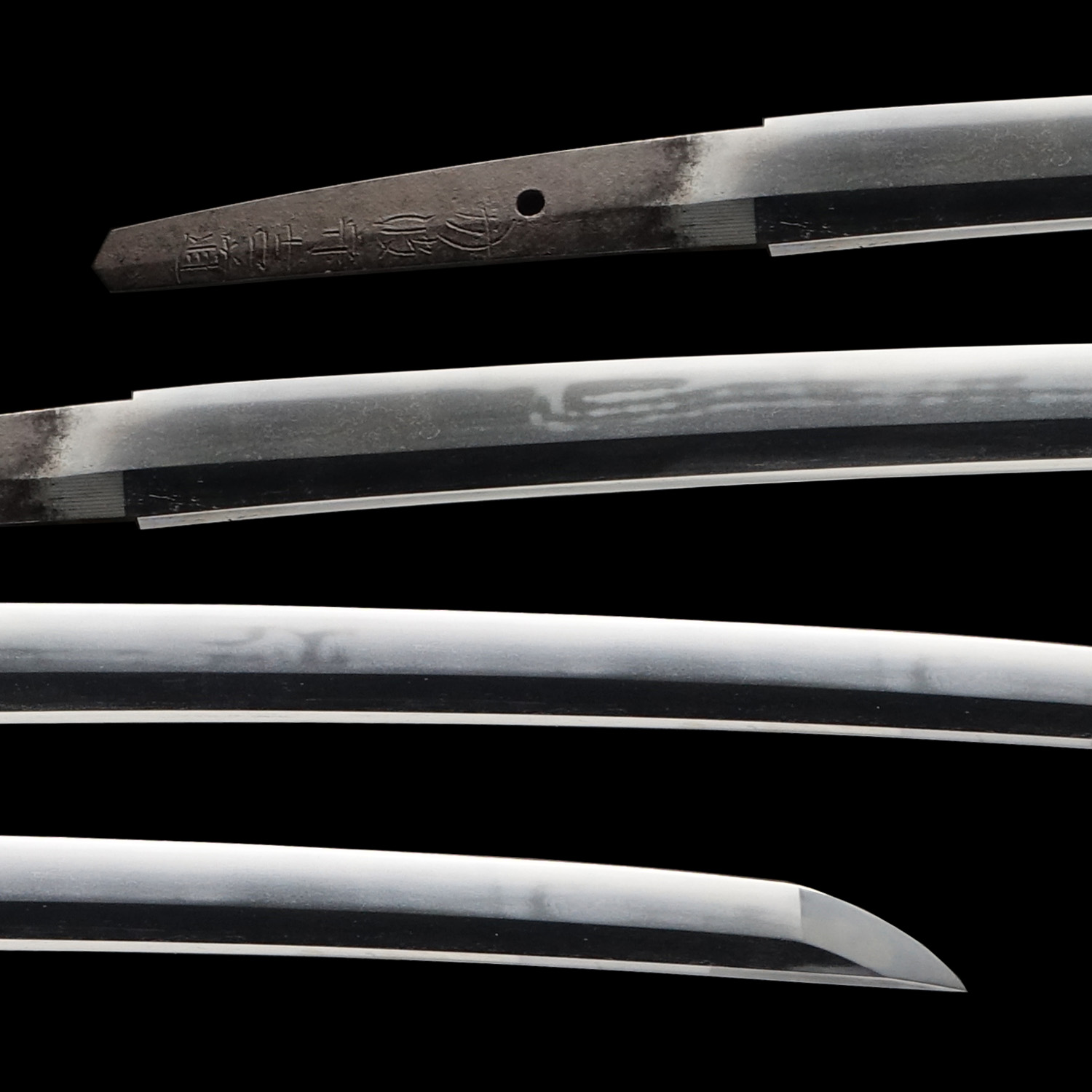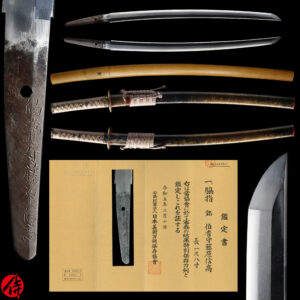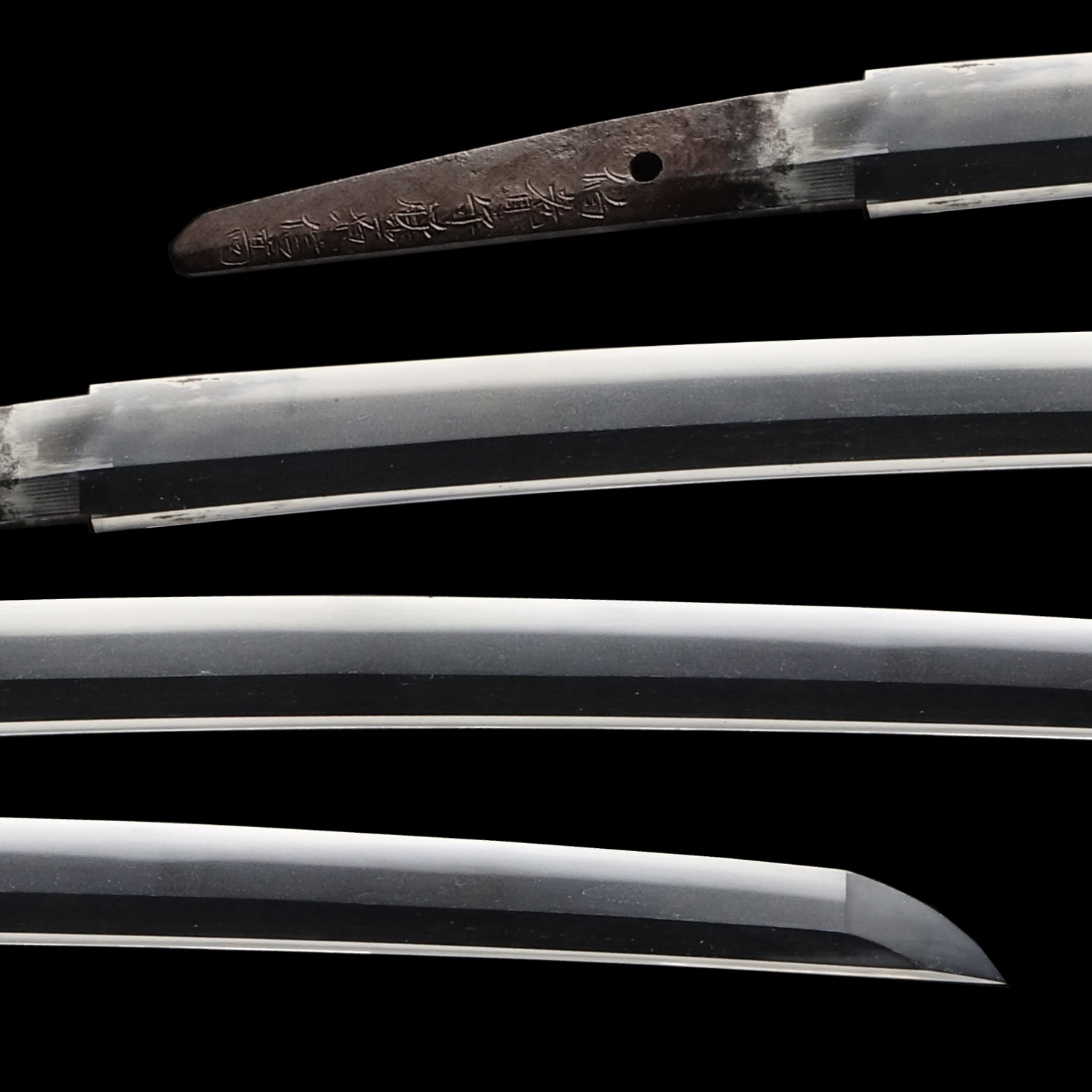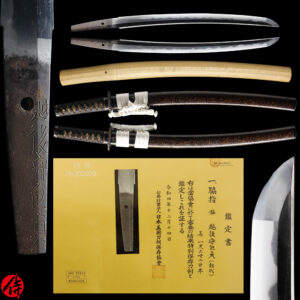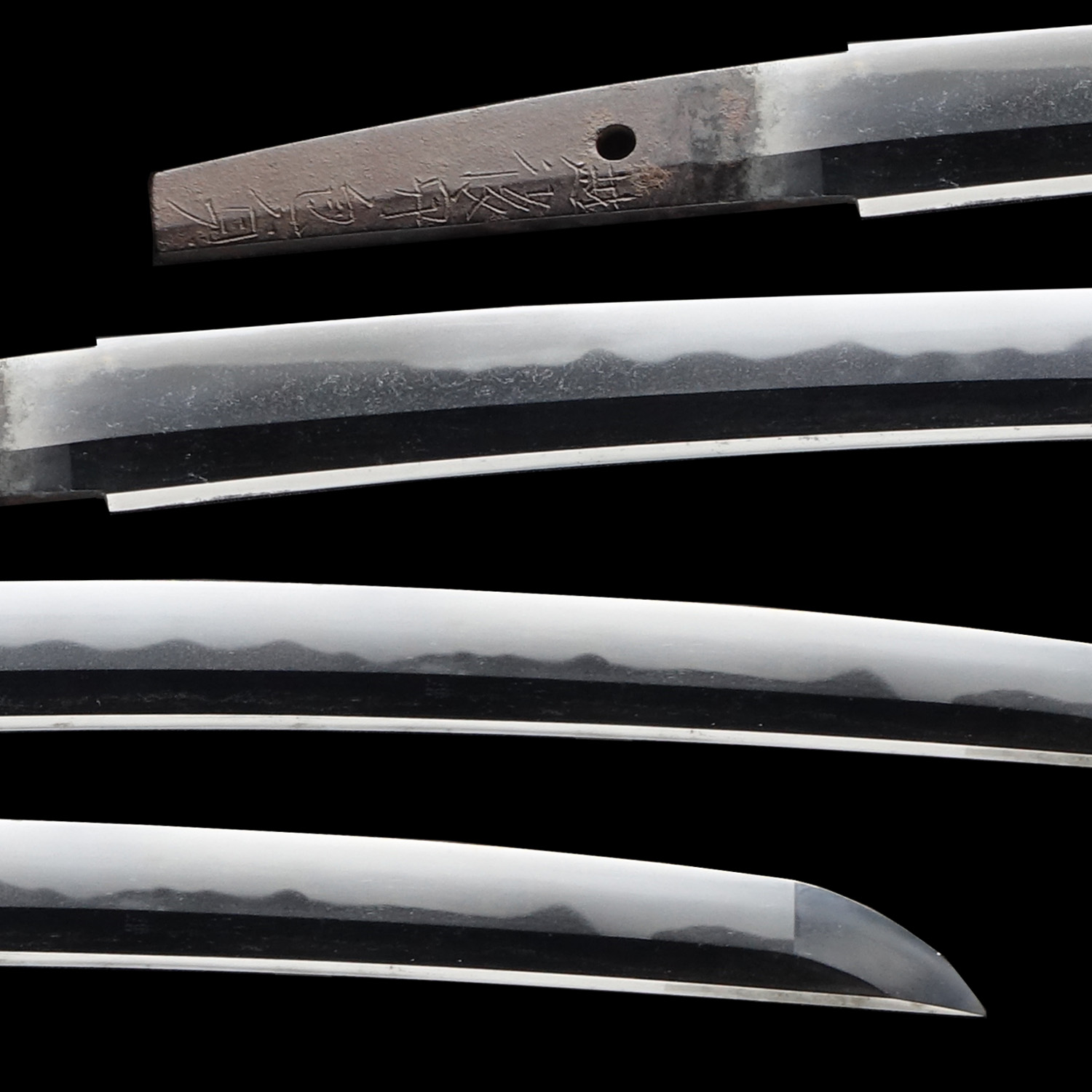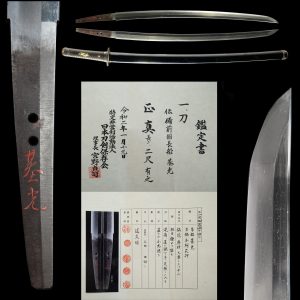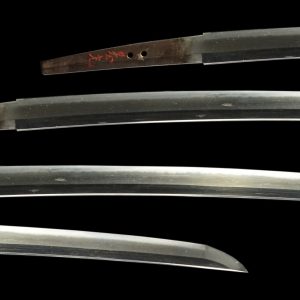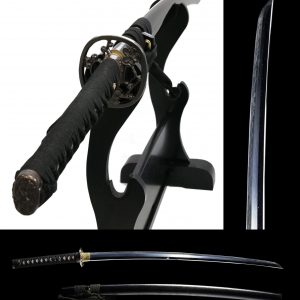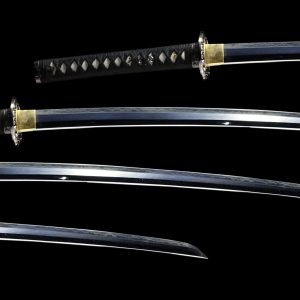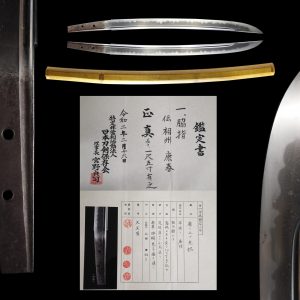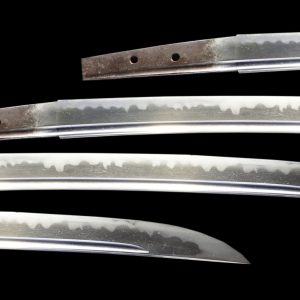Antique Japanese Sword Tanto Signed by Moromitsu with NBTHK Tokubestsu Hozon Certificate
【Description】
This blade was signed by Bishu Osafune Moromitsu in December, the first year of the O-An era (1368: Mid Nanbokucho period). Moromitsu was the son of Tomomitsu (倫光) and the father of Morimitsu (盛光). Bishu(備州)is a larger area in today’s Okayama&Hiroshima prefecture. Bishu consists of Bizen(備前), Bitchu(備中), and Bingo (備後). Osafune is the name of the prestigious school located in Bizen province. Moromitsu was active during the mid-late Nanbokucho period (mid-late 14th century) .
Moromitsu is categorized as a Kozori swordsmith. Kozori is a group of swordsmiths who belonged to Osafune school in Bizen during the Nanbokucho Period but weren’t part of major branches such as Kanemitsu school. Moromitsu is one of the most prominent figures in this school. Other famous swordsmiths seen as Kozori are Morimitsu (His son), Yasumitsu. The three swordsmiths, Moromitsu, Morimitsu and Yasumitsu are called O-Ei no Sanmitsu (応永の三光), three most renowned swordsmitsh in Kozori school during the O-Ei era.
When Moromitsu was active in the Nanbokucho period, Japan was tumultuous because the imperial court was split into two sides(south and north). There were many conflicts, and many Samurai were deployed. And Moromitsu and Kozori school must have dedicated themselves to forging high-quality blades for those Samurai who fought in battles.
This History of Bizen Osafune School
It is said that Osafune school was founded by Mitsutada (光忠), who was active during the mid-Kamakura period. Bizen Osafune school was the biggest one of all other schools in Bizen province, and they received many orders from feudal lords or renowned Samurai. They were called Osafunemono and beloved by Samurai warriors.
Among the swordsmiths who belonged to this school, Nagamitsu, Sanenaga, and Kagemitsu are known as Osafune Sansaku, the three renowned Osafune swordsmiths. There are also four other prominent swordsmiths who were from Bizen Osafune school. They are called Osafune Shiten-no, the four masters of Osafune school. Their names are Nagamitsu, Kanemitsu, Nagayoshi, and Motoshige.
BIZEN is located near the Chugoku Mountains, where iron sands, one of the essential materials for making Japanese swords, were abundant. Furthermore, BIZEN swordsmiths had close access to Yoshi River, where they could find water and charcoal. This geological location contributed to the swordsmiths forging high-quality refined blades. We presume BIZEN was quite active in sword-forging from ancient times. It is said that BIZEN DEN was created by groups of swordsmiths there during the late Heian era (Late 12th century ). These ancient swordsmiths in Bizen province are called Ko-Bizen (Old Bizen) swordsmiths. By inheriting the sword forging techniques from Ko-Bizen swordsmiths, the Bizen Osafune school flourished from the mid-Kamakura period.
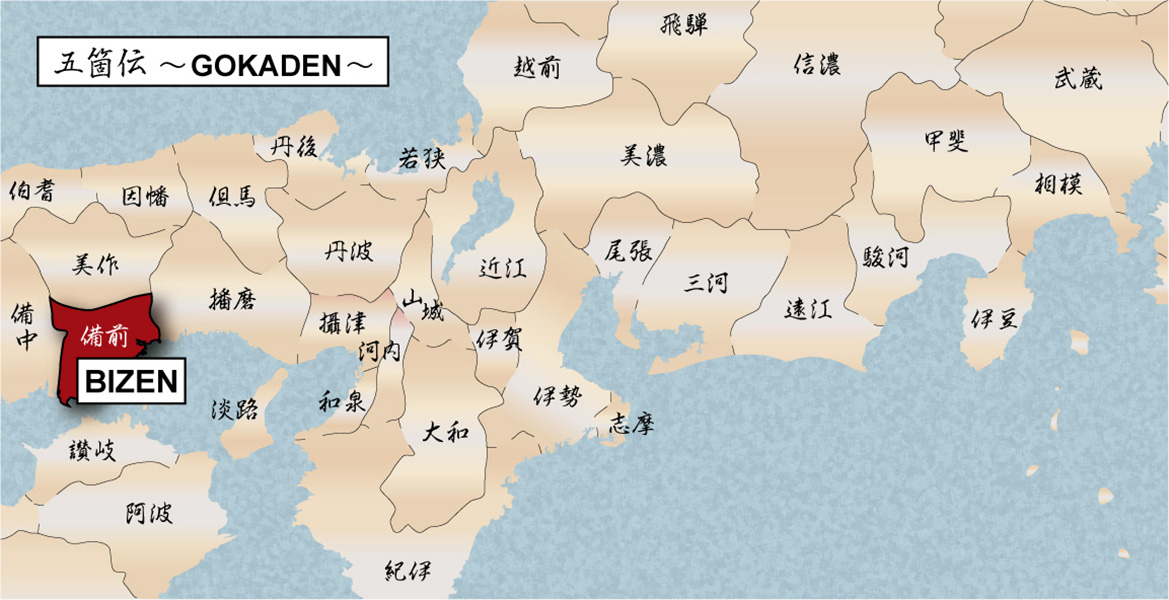
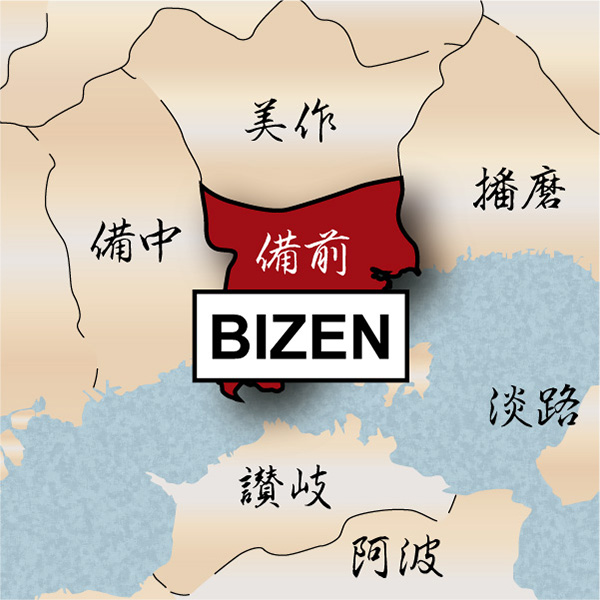
This blade is appraised as a Tokubetsu Hozon Token(特別保存刀剣) issued by NBTHK(Nihon Bijutsu Touken Hozon Kyokai:日本美術刀剣保存協会). This authentication paper was only given to authentic Japanese swords, especially well preserved and high quality with artistic value.
【Blade】
Cutting Edge Length(Nagasa):27.5 cm ( 10.8 inches)
Curvature(Sori):0.1 cm (0.04 inches)


Hamon:
The crystalline structure which forms along the cutting edge of a blade as a result of the hardening process
Jimon(Jihada):
visible steel surface pattern created by folding and hammering during forging process
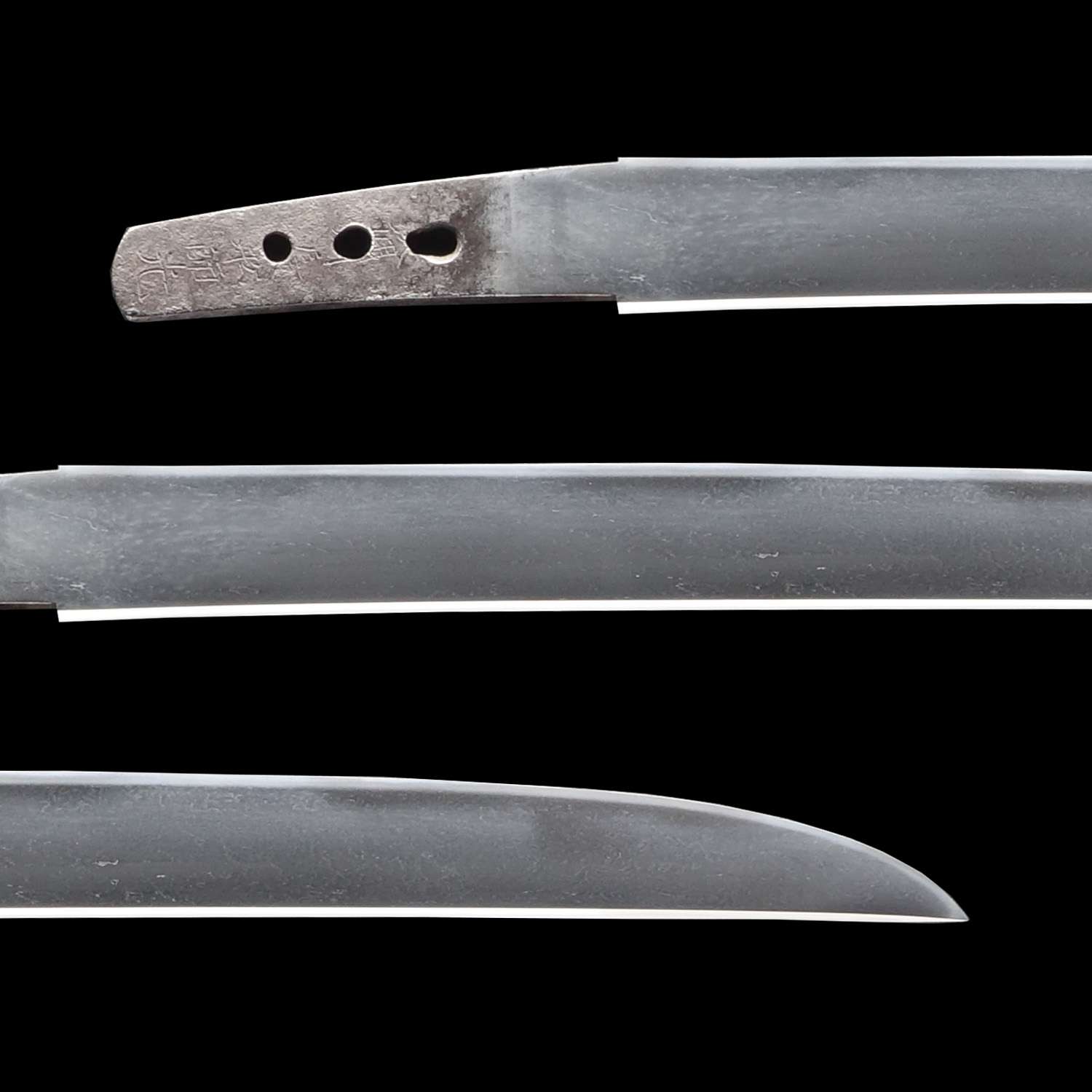


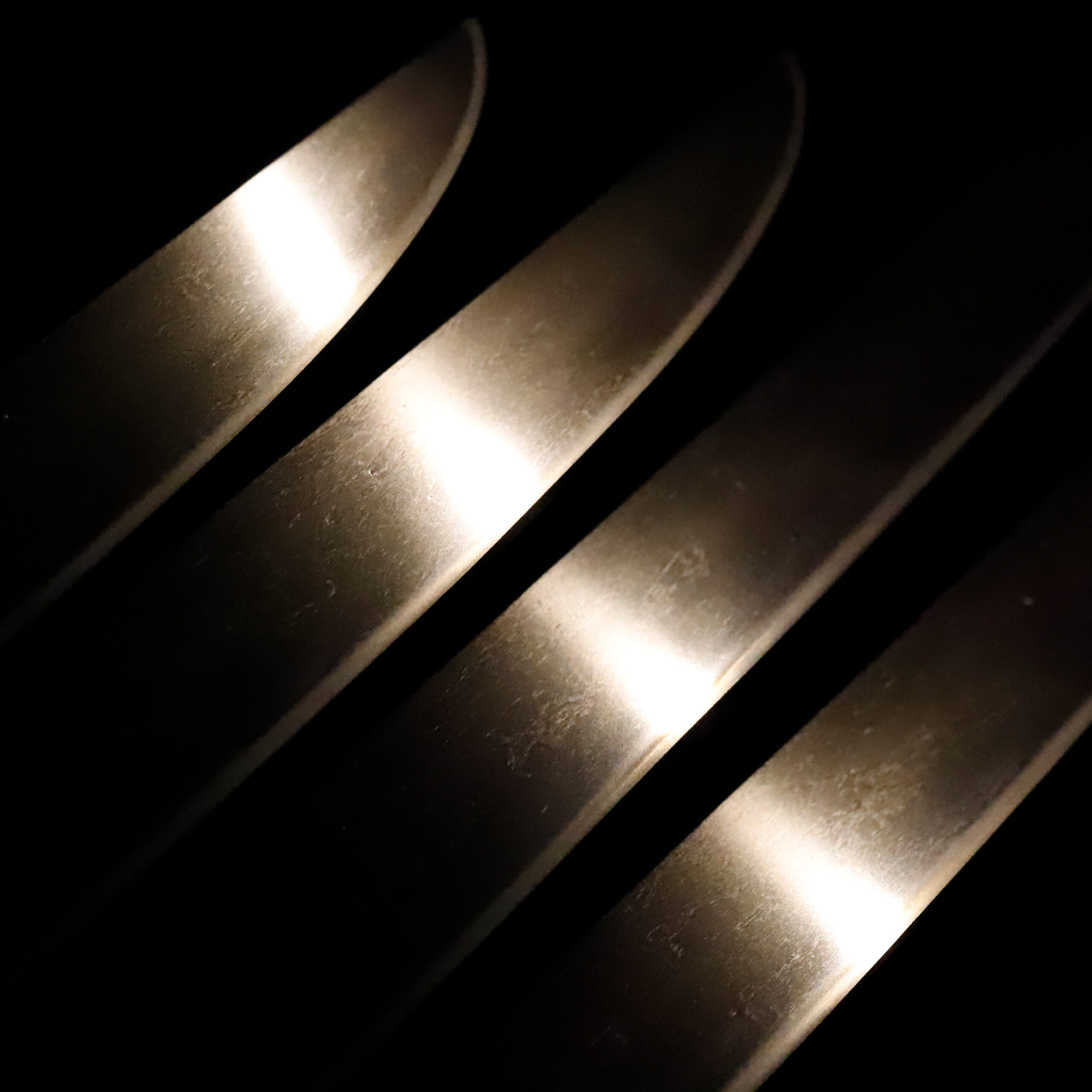
Nakago:Nakago is the tang of the Japanese sword.
Japanese swordsmiths left the black rust on the tang because it prevents red rust while the tang is in its handle. And the discoloration of the tang was created over time, and it is a great indicator for a Japanese sword specialist to estimate when the sword was forged.
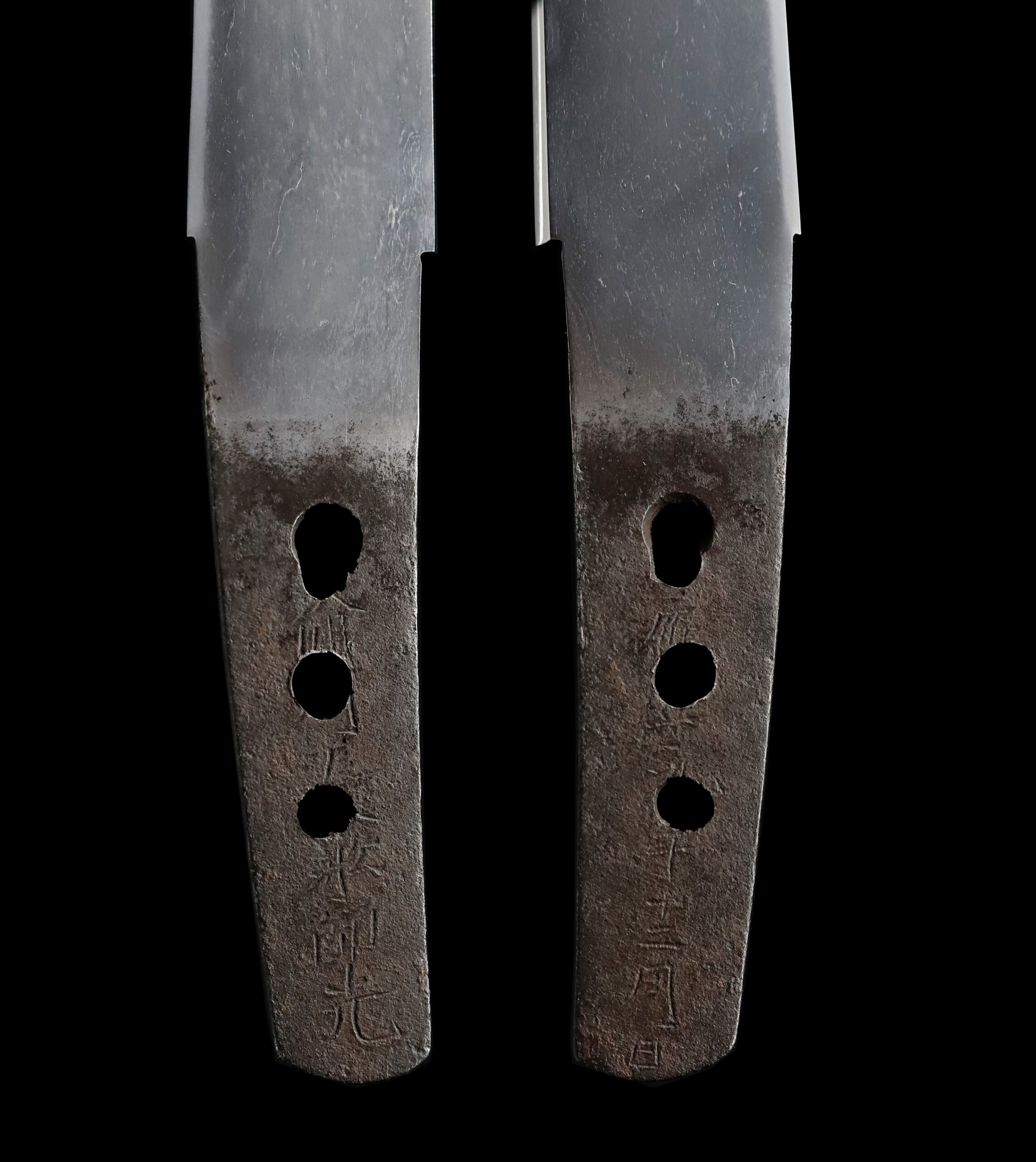
Koshirae: Koshirae is the mounting of the Japanese sword. There are several parts that consist of Koshirae such as Saya(Scabbard), Tsuka( Handle), Tsuba(Handguard).
The Nami Chidori (波千鳥) is the common theme of this Koshirae. You would find similar-looking sword mountings and metal fittings such as the Fuchi Kashira, the Kojiri (鐺, the metal fitting that protects the tip of a scabbard), etcetera. Golden and silvery paintings were effectively applied here and there, adding decorativeness to this Koshirae.
Nami (波) means waves, and Chidori (千鳥) is a plover. The Nami Chidori pattern represents a happy marriage and family safety. In Japan, people have treated it as a good omen design since the Nara period (648-781). Waves are compared to the world, which describes determination: overcoming difficulties with a partner even if there are small or big waves (difficulties/ troubles). Also, the plover pattern is used as a prayer. The Japanese name of the plover, Chidori, was associated with the word Chidori (千取り, which literally means get a thousand). Therefore, its design contains prayers for victory and wishes for goal achievement.

Fuchi-Kashira:A pair of matching sword fittings that cover the upper and bottom parts of its sword hilt.

Tsuka and Menuki:Tsuka is the handle of the Japanese sword and Menuki is its decoration.
While each Menuki has an entirely different design, we assume a relationship exists. Firstly, please focus on the man wearing Western clothing and holding a triangular flag. His clothing appears to be a type of so-called Nanban (南蛮) costume, and we think he was a Nanbanjin (南蛮人, Europeans who came to Japan from the Sengoku period to the early Edo period, either Portuguese or Spanish). His physique indicates affluence, and his expression, which appears to be smiling a little, gives the impression of being friendly.
Next, please look at the elephant-designed Menuki. Here, we introduce the history of elephants to you. In the Edo period, the 13th year of the Kyouho (享保) era (1728), two elephants were brought to Japan from the continent. They were gifts for the Tokugawa Shogun at that time, Tokugawa Yoshimune (徳川 吉宗, 1684-1751). Many ordinary people saw this animal during the journey from the elephant’s arrival to Edo city. And this giant animal became a trend among people. Initially, the Hakuzou (白象, white elephant) was sacred in Buddhism. It is known as a vehicle of the Fugen Bosatsu (普賢菩薩, Samantabhadra, a bodhisattva of rationale and mercy). A theory says Mayabunin (摩耶夫人, Mahāmāyā), who is the Buddha’s birth mother, saw a white elephant when she got pregnant Buddha. Also, the elephant has been regarded as a patient animal. Based on this history and religious idea, it is understandable that the elephant motif was incorporated into motifs for various items, as seen in this work.
We have just introduced an event when many Japanese people, including ordinary people, saw a real elephant. In the Edo period, shopping similar to what we now call mail order already existed. However, of course, this business was not for the ordinary people but for the Shogunate and feudal lords. At the time, Nagasaki (長崎) was a gateway for international trade, and rare items from foreign countries were imported one after another. Among these items, rare animals and monster birds that Japanese people have never seen or heard were extremely popular.
For the Shogun and the Shogunates, rare animals and strange birds they had never seen or heard of were fascinating. But it was uneasy to decide whether they wanted it or not. The Takagi family, who had served as Nagasaki magistrates for generations, would draw up illustrations of rare birds and beasts whenever they arrived and send them to the Edo Shogunate to make inquiries. The Shogunate carefully examined the drawings, selected only those they wanted, and ordered them. It is similar to the current catalog mail order. We could imagine that it was pretty challenging for common-class Samurai to acquire and raise these rare beasts, so there might have been a time when they incorporated them as motifs into their personal belongings, such as sword accessories. The relationship between the southern barbarian-style man and the elephant we mentioned earlier is a natural combination, considering that there is a connection between Japan and trade with other countries during the Edo period.
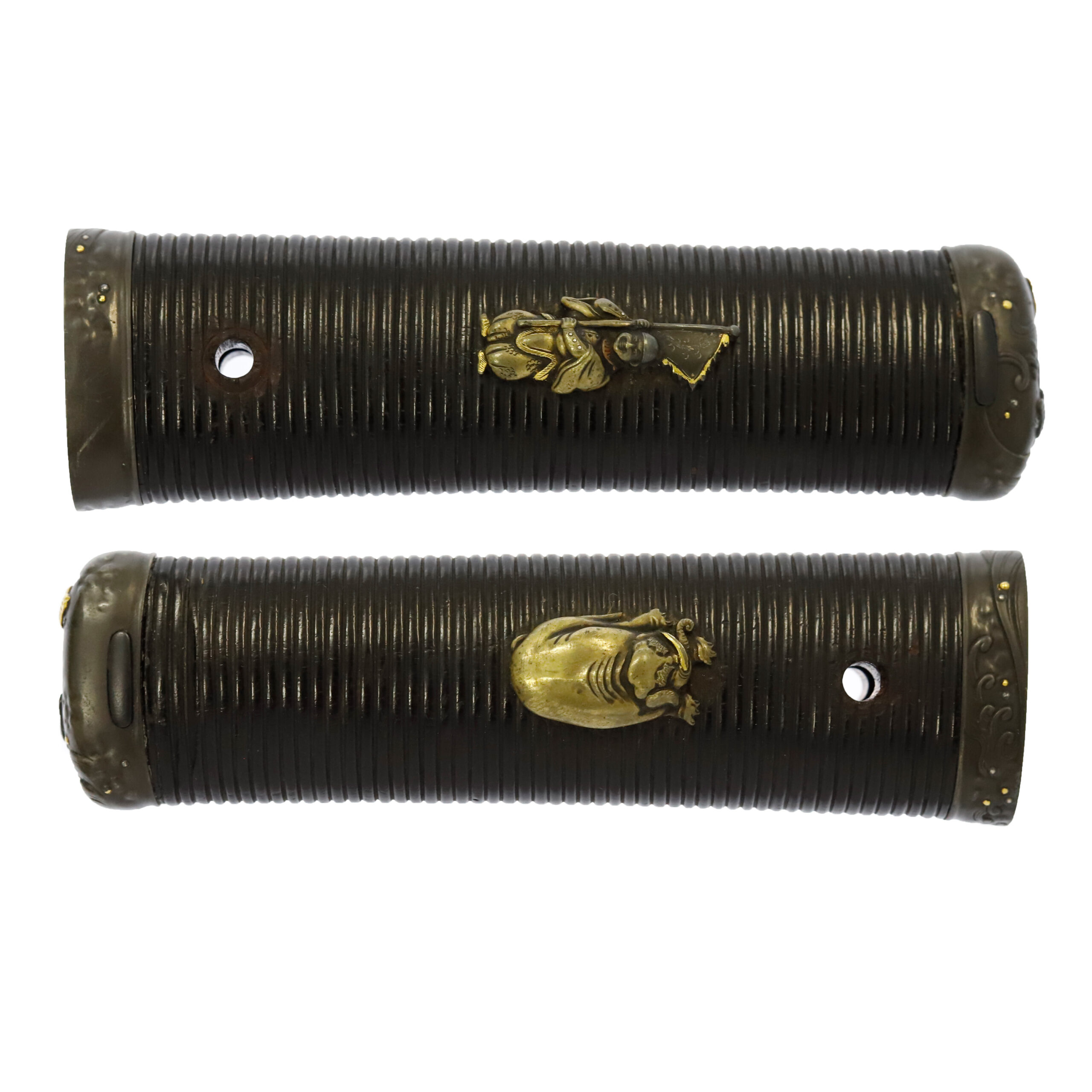

Tsuba and Habaki:Tsuba is the handguard for the Japanese Sword and Habaki is the equipment to make the blade not touch its scabbard inside. It prevents the blade from getting rusty and chipped.
This Tsuba has a simple look. There are recesses on each side for passing other parts (Kozuka and Kougai, please check the following descriptions), and the Tsuba itself is plain and has no ornate decorations such as gold and silver inlays. We hope you would enjoy the color and texture of the iron material.

Kozuka:Kozuka is a small knife stored in Kozuka Hitsu(groove of the sheath of the Japanese sword).
A Kogatana (小刀, small knife) is stored in the Kozuka. The same as the Fuchi Kashira, this item is also decorated with the Nami Chidori pattern. Furthermore, this design is also common with another metal fitting mentioned below.
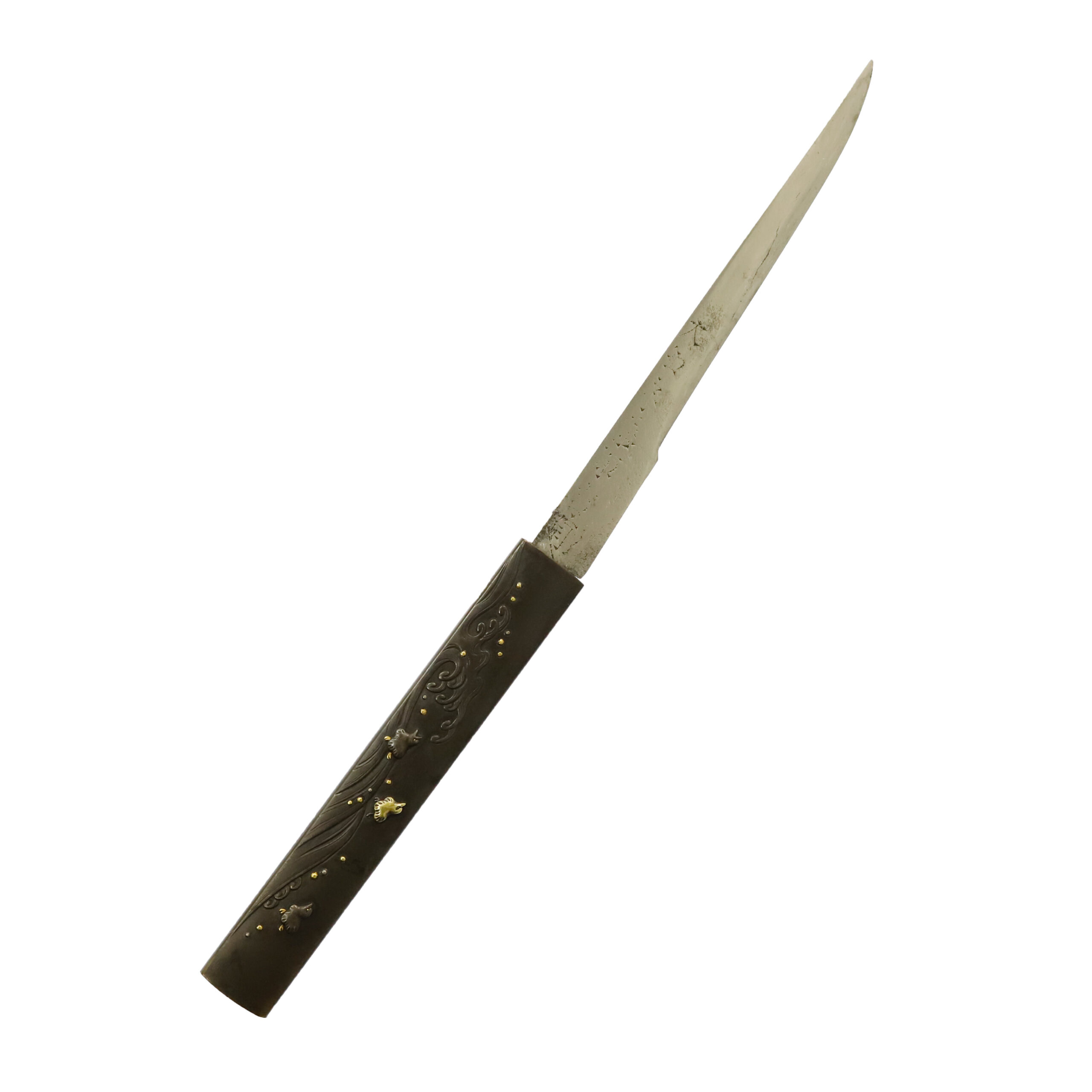

Kougai:Kougai is the equipment for Samurai to arrange or fix his hair style.
This item is an antique Kougai (笄), which was used to arrange or fix the hairstyle of Samurai. The Kougai is usually stored in the Kougai Hitsu. The Kozuka is often kept on the other side of the scabbard, as seen in this Koshirae.
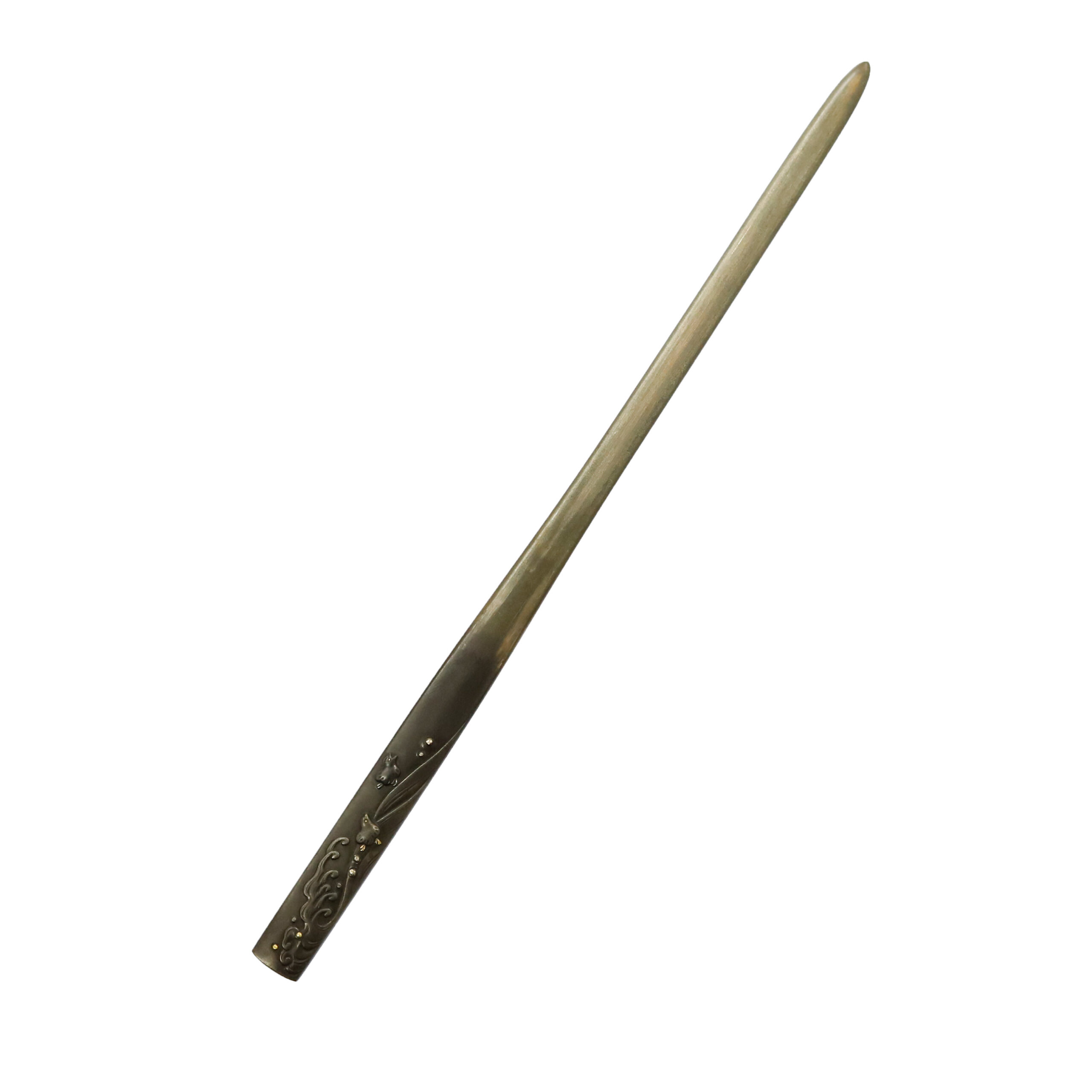

Saya: Saya is the scabbard for the Japanese sword.
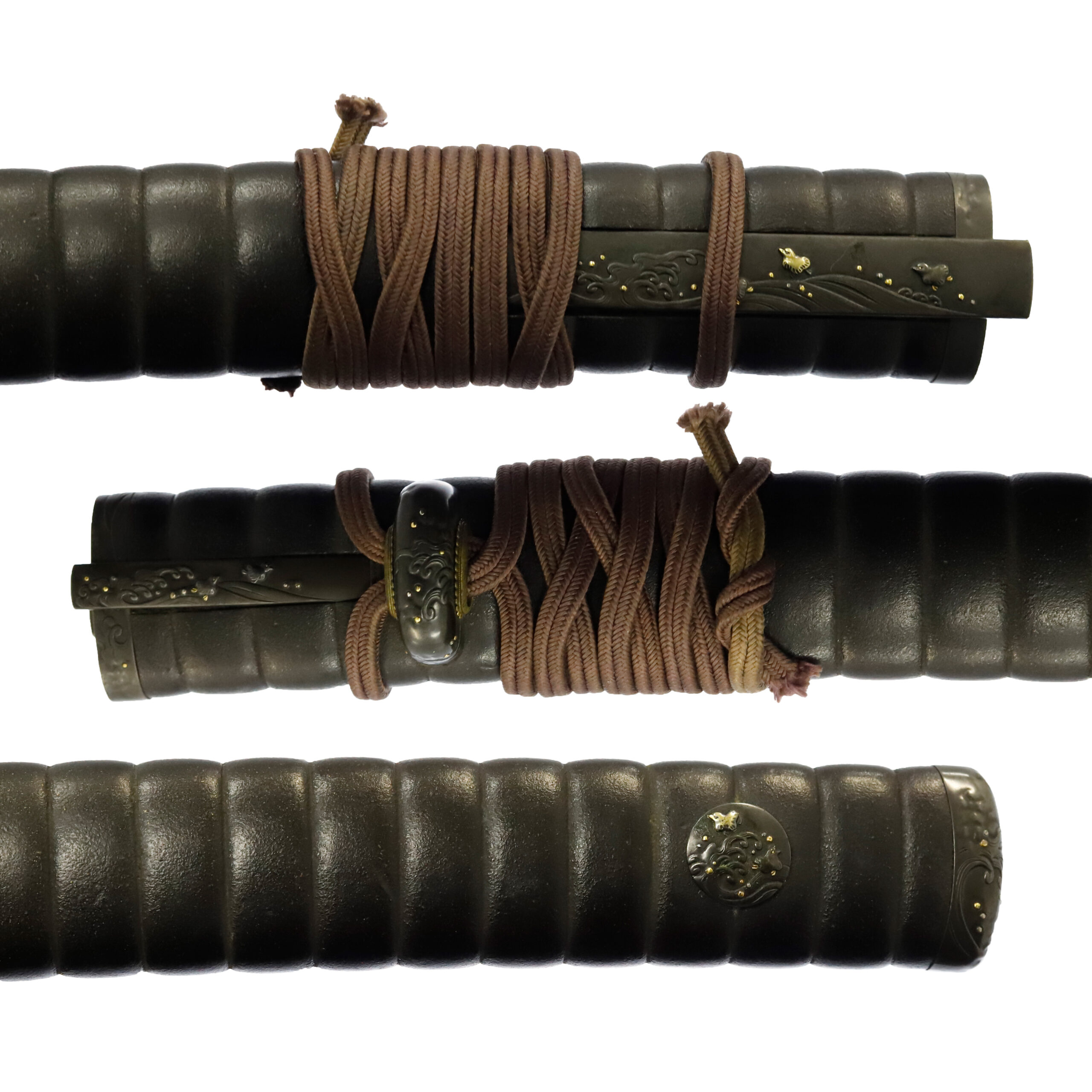
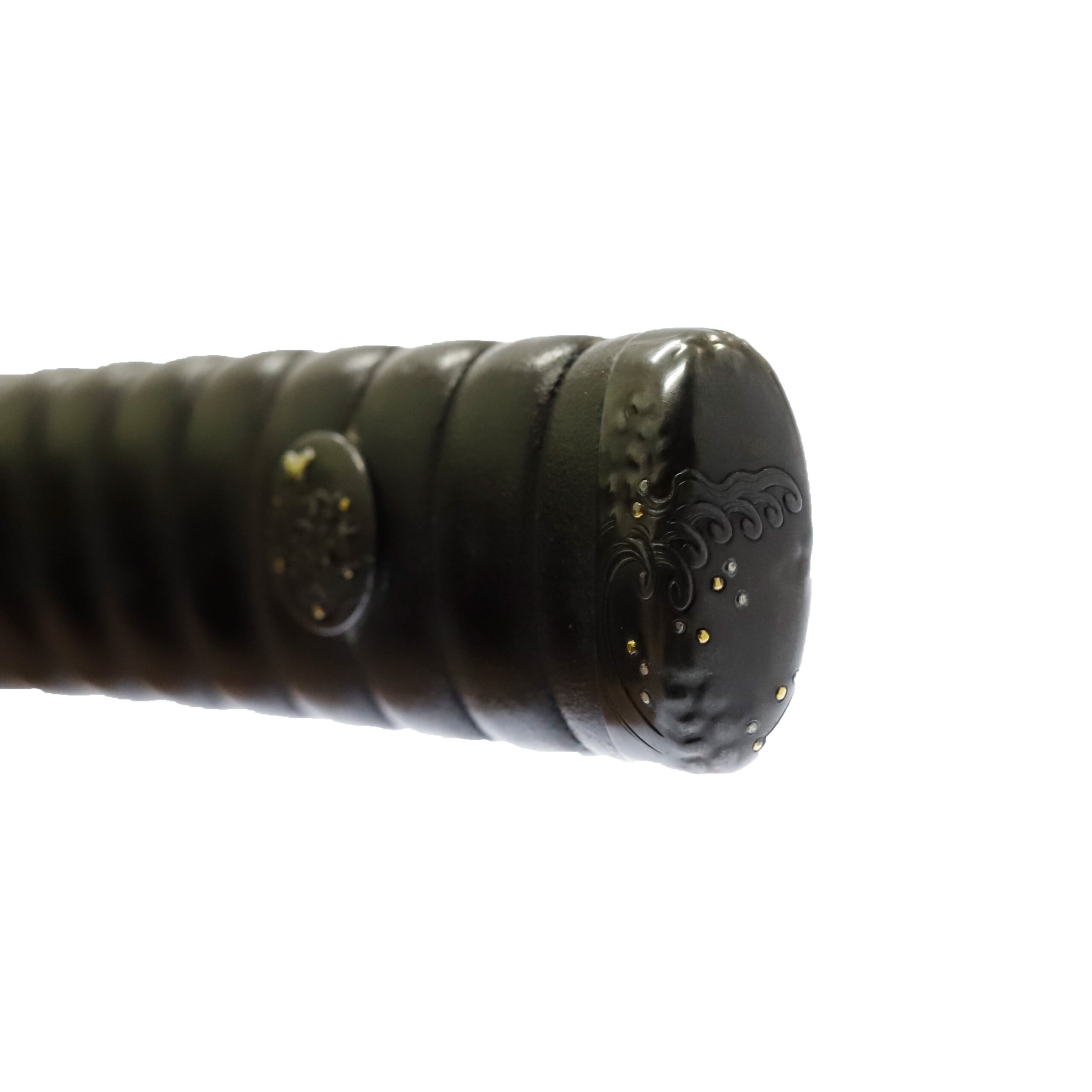
Authentication Paper:NBTHK Tokubetsu Hozon Certificate for the blade (No. 121489) and for the Koshirae (No. 220930)
NBTHK, also known as Nihon Bijutsu Touken Hozon Kyokai (the Society for the Preservation of the Japan Art Sword), is one of the oldest Japanese sword appraising organizations in modern-day Japan. They authenticated the blade on October 25th and Koshirae on October 31st in the second year of Heisei (1990). They appraised it as Tokubetsu Hozon Touken, the blade and Koshirae especially worth preserving for Japanese society. The purchaser will receive this original certificate as well. We can also translate what is written into English and make a PDF file for your record if you request.


Registration Number : Ibaraki 41679
The Board of Education in Ibaraki prefecture issued a registration paper for this sword. It is called Jyu Token Rui Torokusho(銃刀剣類登録証). Bunkacho(The Agency for Cultural Affairs) acknowledges a Japanese sword with this paper as a work of art.
The sword needs to be traditionally hand-forged and made of Tamahagane carbon steel to be registered in the system. With this paper, its owner in Japan can legally own an authentic Japanese sword. Based on this registration number, we will apply for its export permit.
This paper will need to be returned to the board of education when the sword is being shipped abroad, but you can receive a copy of it. An English translation of this registration paper is available on request.
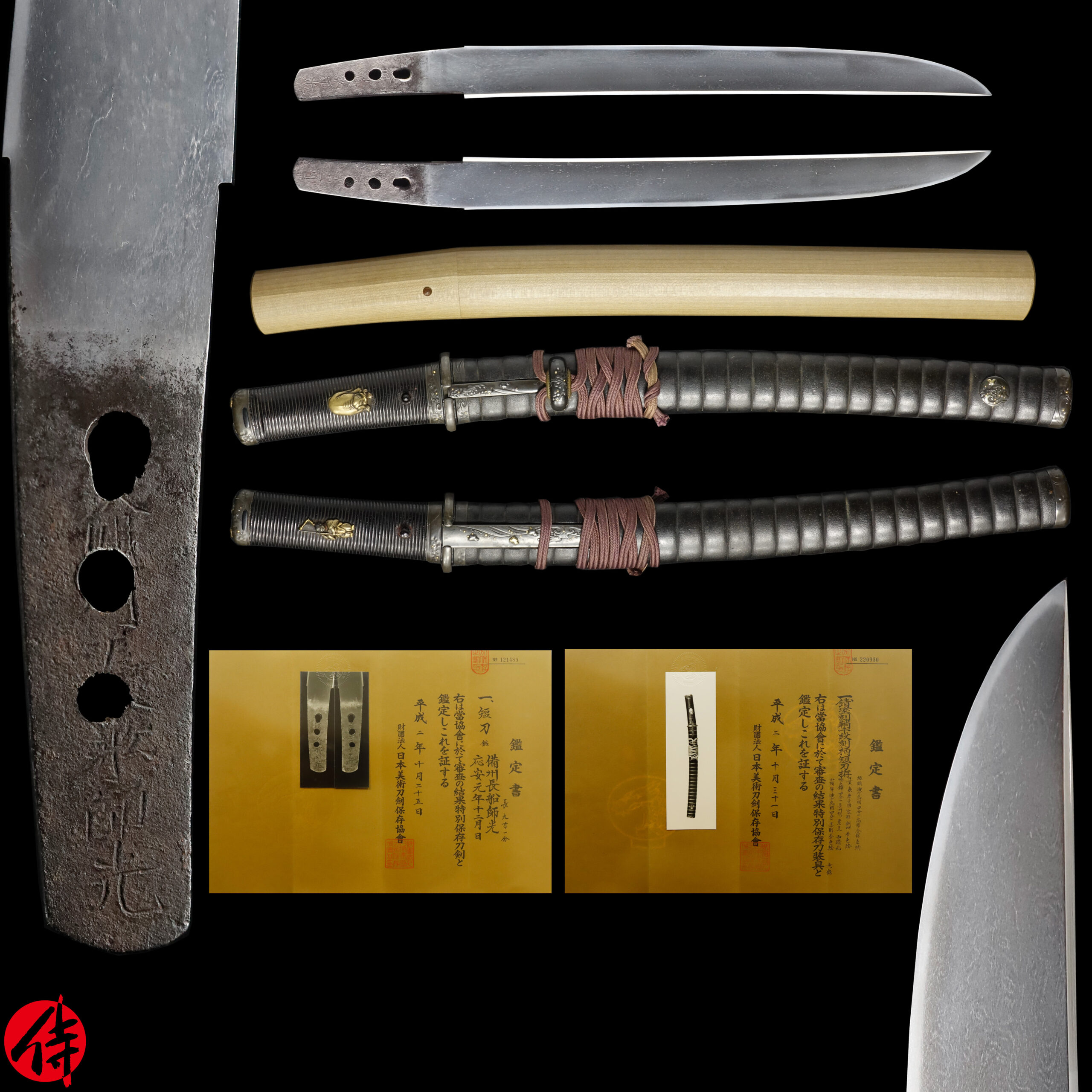
—————————————————————–
【About us】
Samurai Museum is located in Tokyo, Japan, exhibiting antique artifacts related to the Samurai history. Samurai Museum Shop is the place for those who are interested in Japanese culture and craftsmanship. We deal with antique Samurai swords/armor, traditional crafts made in Japan and so on.
【Japanese Sword& Export Process】
The Japanese swords we deal with are hand-forged edged swords made in Japan. It was made from the traditional carbon steel called TAMAHAGANE(玉鋼). Samurai Museum is familiar with the proper legal procedure for an antique/ authentic Japanese sword to be exported from Japan. We have sent more than 700 Japanese swords for the past few years (~2024) to amazing owners who appreciate its historical value.
Each Japanese sword is registered under the Agency for Cultural Affairs and the Board of Education in Japan. They issue a registration paper for each Japanese sword for its owner in Japan to legally possess it. The Japanese sword with its registration paper means it was traditionally hand-forged in Japan.
To legally export the sword from Japan to other countries, we will have to apply for its permit to the Agency for Cultural Affairs(Bunkacho) and return the original registration paper to the Board of Education. It normally takes around 2-4 weeks to receive this permit after submitting required documents. And we would like you to expect at least 1-1.5 months for your order to arrive at your given address after you ordered. For more detailed info, please click here.
It is allowed for residents in Japan to own authentic Japanese swords without a special license as long as they come with registration papers. Please feel free to contact us if you are a resident of Japan, whether temporarily or permanently. We will also assist you when you leave Japan and need to obtain the export permit.
【Payment Method】
We accept payment through Stripe (Credit card), PayPal, Apple Pay or ChromePay, all of which are secure payment methods. Also, you don’t need to make an account on Stripe for the checkout. If you prefer other payment method, please contact us. After confirming your payment, we will apply for an export permit. You may either pay in JPY, USD, AUD, CAD,EUR CHF or GBP. The price is set in Japanese Yen. Prices in other currencies are automatically calculated based on the latest exchange rate.

* If the amount is above 1 million JPY, Stripe or wire transfer will be the only options for payment.
【Shipping】
We have shipped authentic Japanese swords to the USA, UK, Canada, Mexico, Germany, France, Hong Kong, Finland and Australia. If you don’t live in these countries and like to order, please contact us first before making a purchase. We offer Free International Shipping as long as we can send antique Japanese swords by EMS.
We normally ship by EMS(Express Mail Service) provided by Japan Post. We will send you a tracking number for your order as soon as we hand it to the post office. We will put 100 % insurance on the shipping document without any extra charge. Based on the total amount, there might be a duty tax or other fee for you to pay, depending on the countries. We use package cushioning to protect the item and put it in a PVC pipe, which is one of the most secure packages because of its durability.
It will normally takes 5-14 days for the item to arrive at your given address after we dispatch it. Time of delivery is estimated as accurately as possible by the carrier but does not take into account any delays beyond our control such as by inclement weather, post office holiday seasons.
* If you live in Australia and like to purchase an authentic Japanese sword, please click here to know the detail.

【Review】
Here is one of the reviews we received from a customer who purchased an authentic Japanese sword from us. For more reviews, please click here.
“My experience overall with the whole process was wonderful. I had many questions about the history and process to purchase these treasures. All my questions were answered very timely and complete. The staff is very knowledgeable and very well versed if any questions do arise.”
【How to make sure the condition】
Please keep in mind that what you are going to purchase is an antique item. We uploaded high resolution photos for you to check its condition thoroughly. If you like to see more photos with different angles, please feel free to contact us. We will be happy to send them to you so that you can make informed decision. It is essential for us to know that you are happy with your choice of a sword. and we are prepared to use the best of our ability to serve you.
【How To Contact Us】
Please contact us through email, Facebook Messenger or Live Chat if you have any questions. You can find each icon on the right side of the website. Please click one of them to reach us. We will reply to you within 1-2 business days.
【The Art of Nihonto (Japanese Sword)】
Samurai’s history is a profound, eloquent legacy of ancient Japanese warriors in which millions of people worldwide are being fascinated. If you like to find out the art of Nihonto, please click here.
【A Guide to Japanese Sword Maintenance】
After acquiring an genuine Japanese sword, it is also important to know how to take good care of it. Here is the special video for you. Mr. Paul Martin, Japanese sword expert, shows you how to give proper maintenance to your sword. By mastering how to clean the Japanese sword, its aesthetic beauty will last forever.
When you purchase a Japanese sword from us, you can get a Free Japanese sword maintenance kit. It comes with four tools(Choji Oil, Uchiko Whetstone Powder, Peg remover, Oil Applicator). By watching the video instruction above , you can enjoy learning how to maintain your Japanese sword while appreciating it. If you have any difficulty assembling the sword or cleaning the blade, you can feel free to contact us.


MORE ANTIQUE JAPANESE SWORD FOR SALE
SWORDS WITHOUT CERTIFICATES FOR SALE
LEARN JAPANESE SWORD TERMINOLOGY
Thank you for reading all the information on the page. If you have any difficulty choosing the right Japanese sword for you, we will be more than happy to help you find the one that speaks to you the most. Please feel free to contact us.




